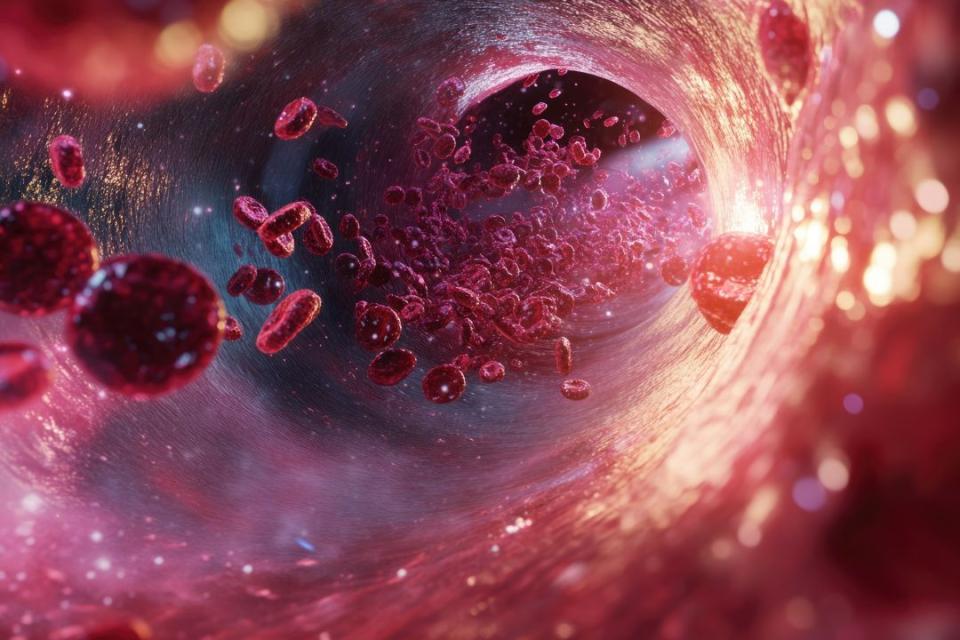UQ invents test to track how medicines ‘hitchhike’ on cholesterol

Tech developed by UQ researchers has revealed that tiny messenger particles released by cancer cells display an affinity for latching onto “bad” cholesterol particles.
(Photo credit: The University of Queensland )
Key points
- UQ researchers have invented technology that tracks how medicines 'hitchhike' on cholesterol particles in our blood
- Mapping cholesterol binding is crucial to establishing how long medicines remain active, which organs they travel to and, ultimately, how effective they are
- The tech also revealed that messages sent out by cancer cells similarly bind to cholesterol particles, opening new inquiries into cancer spread
Technology developed by PhD scholar Raluca Ghebosu and Associate Professor Joy Wolfram has been designed to assess how different medicines bind to cholesterol particles in our bloodstream.
Ms Ghebosu said mapping this cholesterol ‘hitchhiking’ is crucial to establishing how long medicines remain active, which organs they travel to and, ultimately, how effective they are.
“The problem is that this process requires costly, complex, and time-consuming techniques,” Ms Ghebosu said.
“All are significant barriers to what could be a crucial breakthrough in medicine.
“Our test seeks to simplify the mapping process while also making it much cheaper to get answers.”

Extracellular vesicle researchers Raluca Ghebosu and Associate Professor Joy Wolfram.
(Photo credit: The University of Queensland )
The new test, named lipoprotein association fluorometry (LAF), was developed at UQ’s Australian Institute for Bioengineering and Nanotechnology (AIBN) under the mentorship of Associate Professor Wolfram from the AIBN and the UQ School of Chemical Engineering.
Ms Ghebosu said LAF works by using a fluorescent signal to detect when a ‘molecular handshake’ occurs between cholesterol particles and test agents such as medicines.
Crucially, each test is low cost and delivers results in an hour instead of a week.
“By predicting cholesterol binding to various synthetic nanoparticles - as well as polymers, proteins, peptides, and small molecules - we are better placed to uncover information beneficial to drug development,” Ms Ghebosu said.
New insights on cancer progression
As well as measuring how medicines bind to cholesterol, Ms Ghebosu said the LAF also showed how cancer cells could be exploiting the same hitchhiking system.
The technology revealed that tiny messenger particles released by cancer cells - called extracellular vesicles (EVs) – display a particular affinity for latching onto “bad” cholesterol particles.

Cancer cells could be exploiting the same lipoprotein hitchhiking system as medicines.
(Photo credit: imagepocket/Adobe Stock)
Previous studies have shown that these messenger particles help cancers grow and spread, meaning the binding patterns of these particles with cholesterol could open up new inquiries on how to slow or stop the disease.
“Cholesterol is essential for normal body function, but EVs released by cancer cells may be hijacking this system,” Ms Ghebosu said.
Ms Ghebosu said their team had already used the LAF technology to show EVs released by metastatic or ‘super-spreading,’ cancer cells were much better at binding to bad cholesterol compared to those from healthy cells and less aggressive cancer cells.
Associate Professor Wolfram said the binding patterns revealed by LAF could advance our understanding of biological processes and inform future medical applications.
“Ultimately, this raises the possibility that cholesterol may contribute to the spread of cancer through EV binding,” Associate Professor Wolfram said.
“Thankfully, our technique can also be used to explore therapies that help block this binding and assess whether this could slow cancer progression.”

Phd scholar Raluca Ghebosu.
(Photo credit: The University of Queensland )
Collaboration and acknowledgements
The findings are the subject of a patent application which is available for licensing from UniQuest, the commercialisation company of UQ, and are detailed in The Journal of Extracellular Vesicles. Support for the research came from colleagues at UQ’s Frazer Institute and the Australian Institute of Tropical Health and Medicine at James Cook University.Related articles

Sponge-like gold particles could upgrade ovarian cancer diagnostics

Giving doctors an AI-powered head start on skin cancer
Media contact
UQ Communications
communications@uq.edu.au
+61 429 056 139
